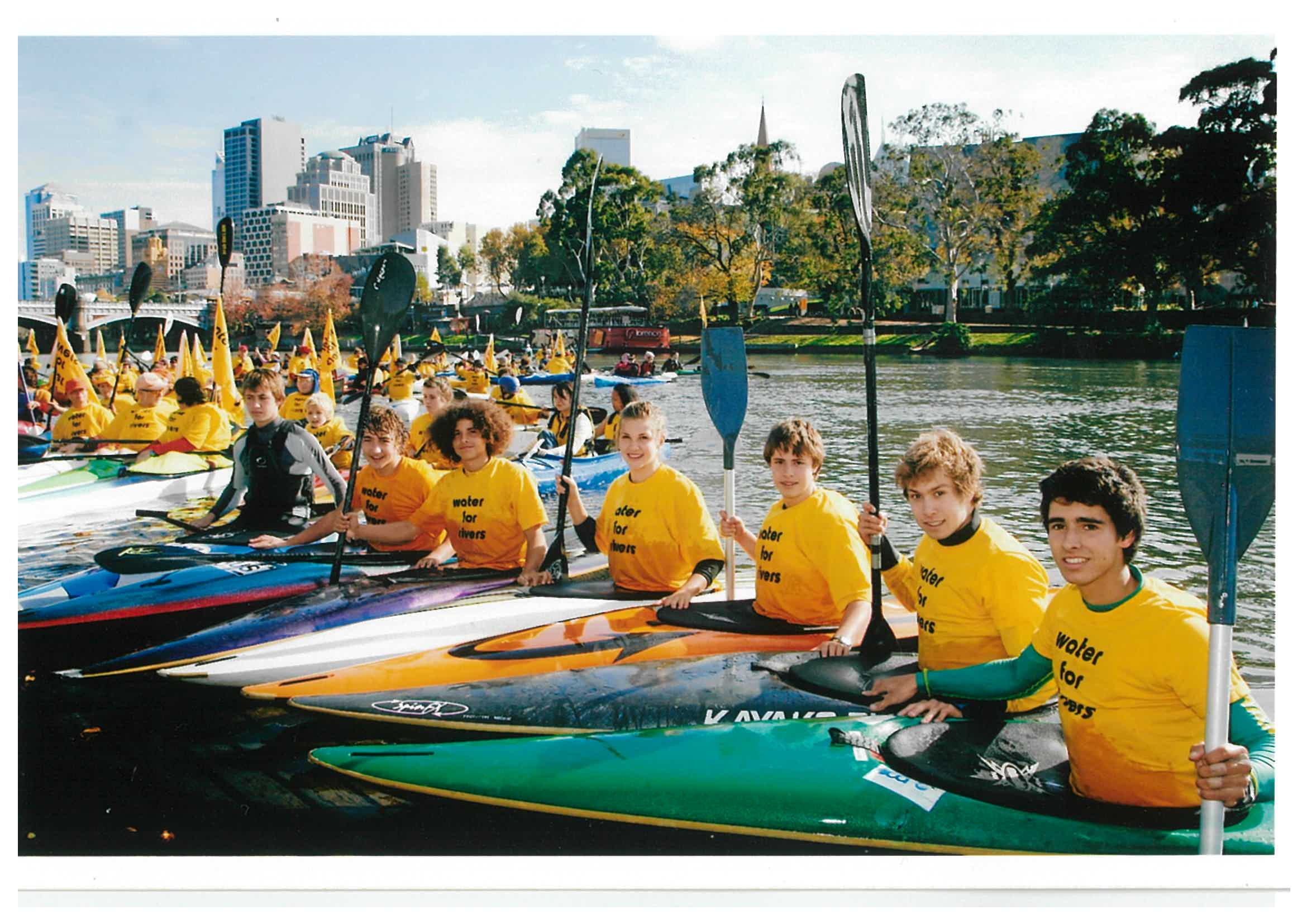“In a protracted drought with the prospect of long-term climate change, we need radical and permanent change.” John Howard made this bold statement on Australia Day 2007, announcing a $10 billion national plan to address “once and for all” the over-allocation of water in the Murray-Darling. It could be a mission statement for Environment Victoria’s Healthy Rivers campaign.
I fell in love with the Murray some years before, on our first ever family camping trip to Lake Hattah. We had a set of sticks on the lake shore in front of our tent showing the water level it rose from day to day. Something clicked and I started on the journey that eventually led me to Environment Victoria and the rivers campaign in 2006.
It was an exciting time. We were working on the first Victorian water strategy to start planning for a future with less water. The Minister announced that water conservation would be the heart of the strategy; an extra 66 billion litres would be set aside for the central region’s rivers, including the Yarra, the Barwon and the Moorabool.
It wasn’t all smooth sailing. Deep into the Millennium drought, with Melbourne’s water reserves plummeting, in 2007 Premier Steve Bracks announced a massive desalination plant and a north– south pipeline to shore up Melbourne’s water supply. It took us another four years of hard work, including a 100-vessel ‘Flow-tilla’ event, to get the promised water for the Yarra.
The drought also had a devastating impact on the Murray-Darling. Rivers were drying up and wetlands turning acidic as batteries. John Howard’s intervention in 2007 created a once-in-a- lifetime opportunity to halt the degradation of our precious rivers, signalling the start of our Save the Murray campaign.
Twelve years later, we’ve used just about every tactic in the book. We’ve held a funeral for the Murray (with a giant Murray cod in a coffin), taken ministers on canoe trips and bus tours, and presented at a royal commission. Not to mention the petitions, submissions, committees, inquiries, discussions with bureaucrats and phone-calls with radio stations that are the bread and butter of a campaigner’s life.
And we have made enormous progress – the Murray-Darling Basin Plan is far from perfect, but it’s still a national plan with bipartisan support and $13 billion funding attached. I’m hopeful we can make it work and restore our rivers to health.
For me the biggest moment came in 2012 when Julia Gillard agreed to add 450 billion litres to the water recovery target in the Plan, changing something that really wasn’t up to the job to a plan with the potential for the ‘radical and permanent change’ that John Howard – and we – had envisaged.
More important than any other achievement is the almost 2000 billion litres of water now held by the Commonwealth Environmental Water Holder to protect and restore the rivers and wetlands of the Murray-Darling. This precious water has been used to promote fish breeding in the Goulburn, fill the lakes at Hattah Kulkyne, and flood sections of the forest at Barmah, Gunbower and other treasured sites up and down the river. It is literally life-giving and beyond our wildest dreams in the early 2000s. While there’s a long way to go, that’s 2000 billion litres of water for the environment that we didn’t have at the start of the process.
None of this would have happened without the work we’ve put in, along with our partner groups and river champions in Victoria and interstate, plus all of you who have supported us every inch of the way.
My most treasured moments from the last 12 years of campaigning are all to do with people who love and care for our precious rivers. I am always amazed by the insights, efforts, commitment and passion you bring. We share a beautiful vision – a river with all the water it needs – and I look forward to passing that on to our next campaigner here at Environment Victoria.
This article appeared in Environment Victoria News, Issue 32, Spring 2019.
